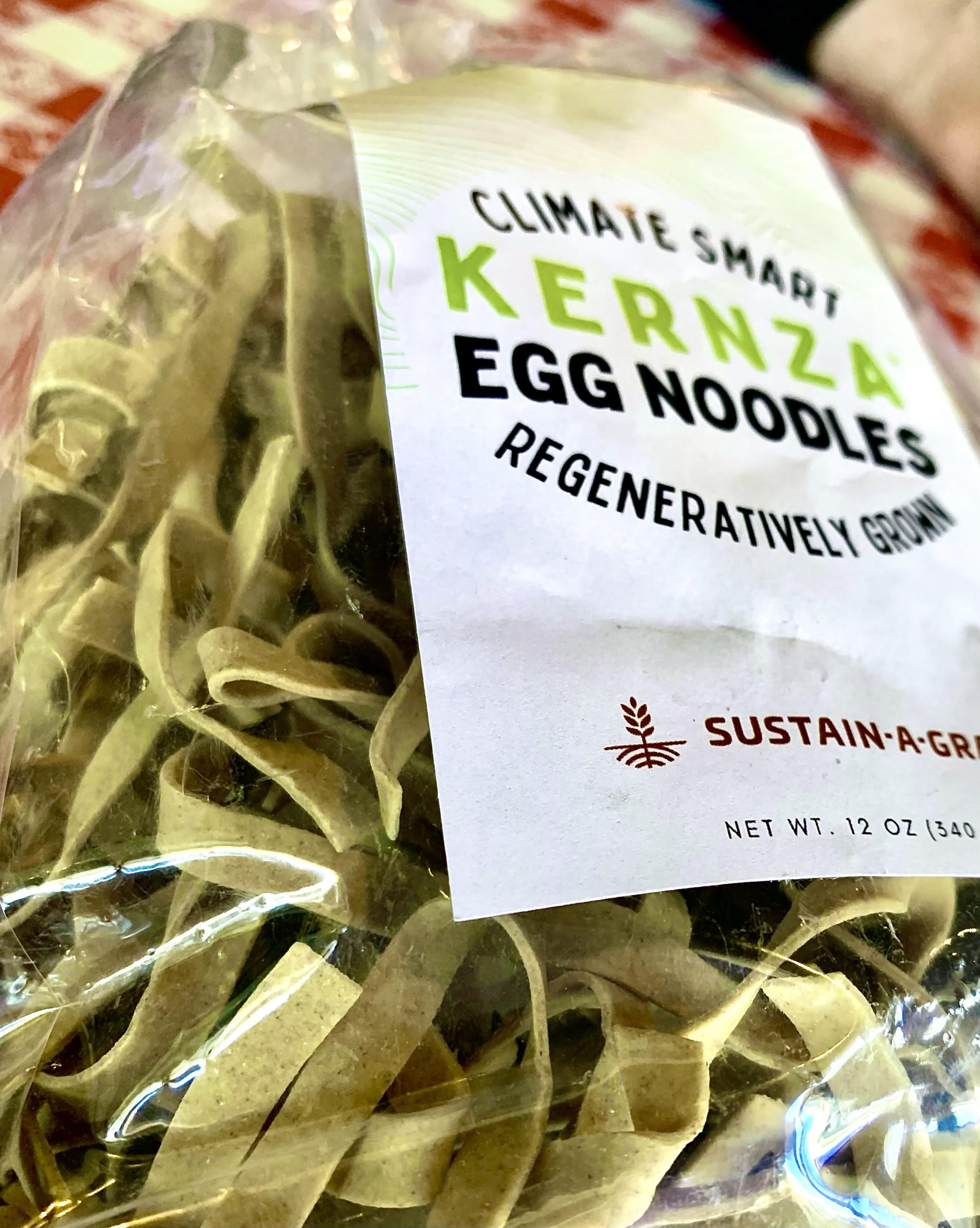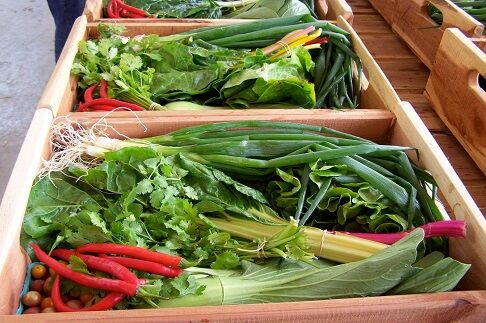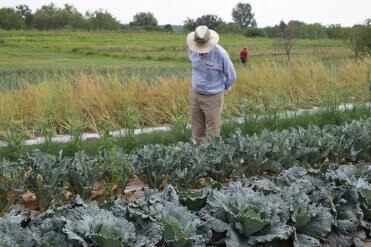An idea to create “a diverse, herbaceous perennial polyculture” was hatched in 1980 by Wes Jackson, founder of The Land Institute, and shared with the Rodale Research Center (now Rodale Institute) of Kutztown, Pennsylvania.
Approximately 300 different species were evaluated “for their utility in perennial agriculture similar to natural ecosystems,” according to a March 30 article in the “Journal of Genetic Resources and Crop Evolution.”
Later came the evaluation of more than 100 grass species. “Intermediate wheatgrass was selected in 1985 as having the highest potential to be developed into a perennial grain crop,” the story reads.
Researchers at the U.S. Department of Agriculture and Rodale Institute began breeding the wheatgrass in 1988, selecting for traits such as improved fertility and seed size. In 2003, the Land Institute, a non-profit in Salina, Kansas, took over the work under the direction of Lee DeHaan Ph.D., lead scientist for the domestication of Kernza at The Land Institute.
A bag of Kernza egg noodles is among the products marketed by Sustain-A-Grain and is pictured above in the photo taken by Tim Unruh.

20-plus years
He began studying Kernza in 2003, and he has been devoted to studying it almost exclusively since 2010.
Prior to those developments, the plant was grown as a forage by farmers and ranchers in Kansas, Nebraska, the Dakotas, Wyoming, Montana and Colorado, said Brandon Schlautman, co-owner of Sustain-A-Grain and lead scientist at The Land Institute working on perennial legumes.
FACTOID: A good Kernza yield, in ideal conditions, approaches 700 pounds to the acre, James Bowden said, compared to approximately 3,000 pounds an acre for annual wheat, or 50 bushels an acre based on industry standard test weights of 60 pounds per bushel.
A Kernza grower in Montana once reported a test weight of 28 pounds a bushel, according to a 2020 report from projects.sare.org. Factoring a bulk weight with 700 pounds per acre, the bushel yield would be 25.
FACTOID: Kernza costs at sustainagrain.com:
• 25 pounds of perennial whole grain, $68.75.
• 15 pounds of Kernza whole grain flour, $74.99
• 15 pounds of rolled Kernza, $67.99 (Schlautman estimated regular oatmeal would be roughly half that price.)
FACTOID:
While Kernza is a perennial plant, researchers are trying to extend the longevity of the crop in the field. Yields typically drop after the third year, said James Bowden, farmer-rancher and Kernza proponent.
“We’re trying to address that problem through plant breeding and plant selection,” he said. “The goal is a longer timeframe without tilling the ground.”
Kernza is on the schedule and menus after Earth Day weekend. Midland Railroad Hotel in Wilson, Kansas, plans a Kernza pancake feed, beginning at 10:30 a.m. May 4. The event is during the Big Kansas Road Trip May 2 through 5. Food made with Kernza will remain on the menu at Fly Boys Brewery & Eats in Sylvan Grove, Kansas.
FACTOID:
Blue Skye Brewery & Eats, 116 N. Santa Fe, of Salina; Walnut River Brewing Company of El Dorado; and River City Brewing of Wichita, plan to have beer made with Kernza by early May but will just miss the Kernza4Kansas event, said James Bowden of Salina, one of the organizers.
“We want to be supportive of The Land Institute’s efforts in any way possible,” said Monte Shadwick, Blue Skye owner. “It fits our model to buy local, drink local, and shop local.”
“We would prefer to have all of the businesses as long-term partners anyway,” Bowden said.
Special parallels of Kernza evolution and wheat migration
Shared by Brandon Schlautman
Turkey Red Winter Wheat was reportedly planted in Kansas during 1874 (150 years ago) by Mennonites near Halstead, and it rapidly spread throughout McPherson, Harvey and Marion counties — Mennonite territories — as more Mennonites immigrated from Russia and Ukraine.
Stories were shared of the wheat seed being sewn into women’s clothing and stuffed it into the heads and torsos of dolls for transport to America. Why it was concealed was not explained.
Turkey Red Winter Wheat is credited with shaping agriculture in Kansas and hard red winter wheat throughout the United States.
Today, nearly all of the Kernza sold by Sustain-A-Grain is being grown by Mennonite farmers in McPherson, Marion, and Harvey counties.
“They are descendants of the farmers who shaped agriculture in the state 150 years ago with Turkey Red Winter Wheat,” Schlautman wrote.
Still carrying the pioneer genes, some of the same families “are taking this grain created at The Land Institute and helping Kansas to become a national and world leader in Kernza grain production — a crop that promises to be good for Kansas soil, is good for Kansas water, good for Kansas farmers, good for Kansas businesses and the people who are eating it,” he wrote. “Kernza4Kansas is an event to help people in the state know this grain, its story and its future.”
• Brandon Schlautman, of Henderson, Nebraska, co-owner of Sustain-A-Grain, based in Moundridge, Kansas, and a lead scientist at The Land Institute near Salina, Kansas, working on perennial legumes.
Buddies start Sustain-A-Grain to propel Kernza production
Sustain-A-Grain began in 2018 when friends Brandon Schlautman and Brandon Kaufman each decided to plant a field of Kernza on their farms in McPherson County, Kansas.
They were excited about its potential to be both a permanent cash and cover crop. Both men quickly learned on those first 100 acres that their first Kernza harvest couldn’t be sold at their local cooperative.
The dilemma led Schlautman and Kaufman to take it upon themselves to form their own system.
In fall 2020, Sustain-A-Grain began inviting other Kansas growers to join their group.
“We made just about every mistake you can growing Kernza,”Kaufman said. “As we learned, we wanted to help other growers start benefitting from the crop by using our experience.”
Agronomic support
He has since focused on working with other growers, providing agronomic support.
“Brandon really took over focusing on figuring out how to process Kernza and how to create ingredients that can be sold to food and beverage companies,” Kaufman said.
Among the challenges is removing the hull of the kernel before it can be consumed or milled into flour.
“There is very little access to custom de-hulling in Kansas or neighboring states,” Schlautman said. “We tried working with a couple of local seed and grain companies, but none of them really had the right equipment we needed for the crop.”
Early on, the partners sent their Kernza grain 720 miles to Valley City, N.D., but since then they have purchased their own de-hulling equipment.
The Sustain-A-Grain partners then developed a range of Kernza-based ingredients, including rolled Kernza (think oatmeal), Kernza flour, and Kernza berries that can be cooked like rice.
Sustain-A-Grain has found success in the food and beverage industry, notably with breweries and distilleries, including Smoky Valley Distillery’s Kernza whiskey, of Marquette.
Sustain-A-Grain showcased Kernza products at the Expo West Natural Food conference this spring in Anaheim, California, and has spoken at national maltster and brewer conferences.
The company aims to scale Kernza production and demand in Kansas and nationally, leveraging its development by The Land Institute to address soil health and climate issues on Kansas farms.
Roles vary in Kernza development
The Land Institute, a nonprofit organization, raises Kernza only for research, scientist Brandon Schlautman said.
Sustain-A-Grain, a company he formed with friend Brandon Kaufman in 2018, exists to help farmers learn to grow, harvest, store and process Kernza, and also to find markets for it.
“In the long term, Kernza’s more expensive than wheat right now because yields are lower,” he said. “We need the Land Institute to keep breeding and improving Kernza as much as possible. The progress of the grain’s genetics has to expand at the same rate as acreage and market demand, which demonstrates The Land Institute’s role over the next several decades.
“The mission includes continuing the cutting edge research to make Kernza yields comparable to wheat and inventing new ways to perennialize and diversify grain cropping systems worldwide,” Schlautman said.
Another goal, he said, is developing a system to someday intercrop perennial grains in polycultures — simultaneously growing two or more perennial crops in the same field.




